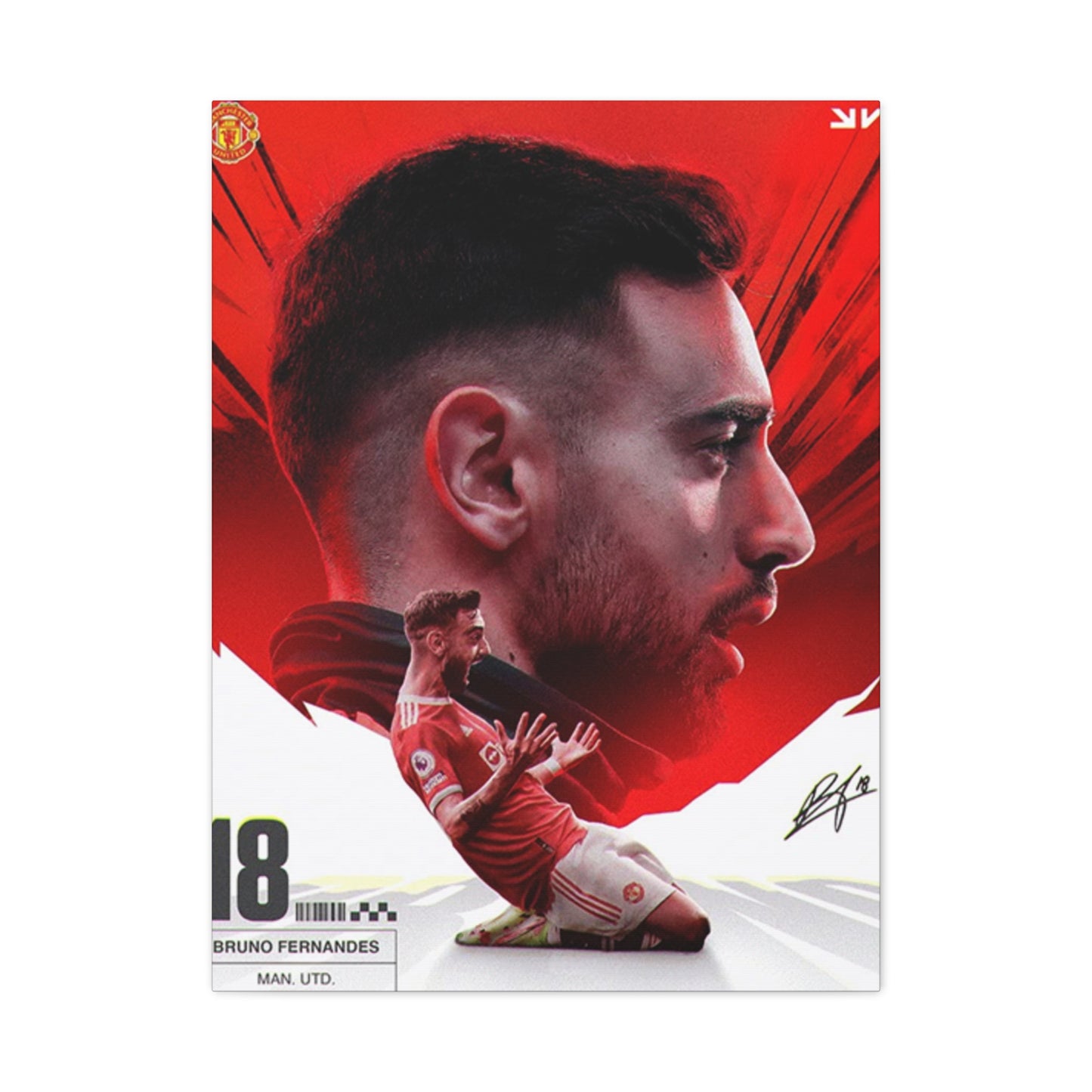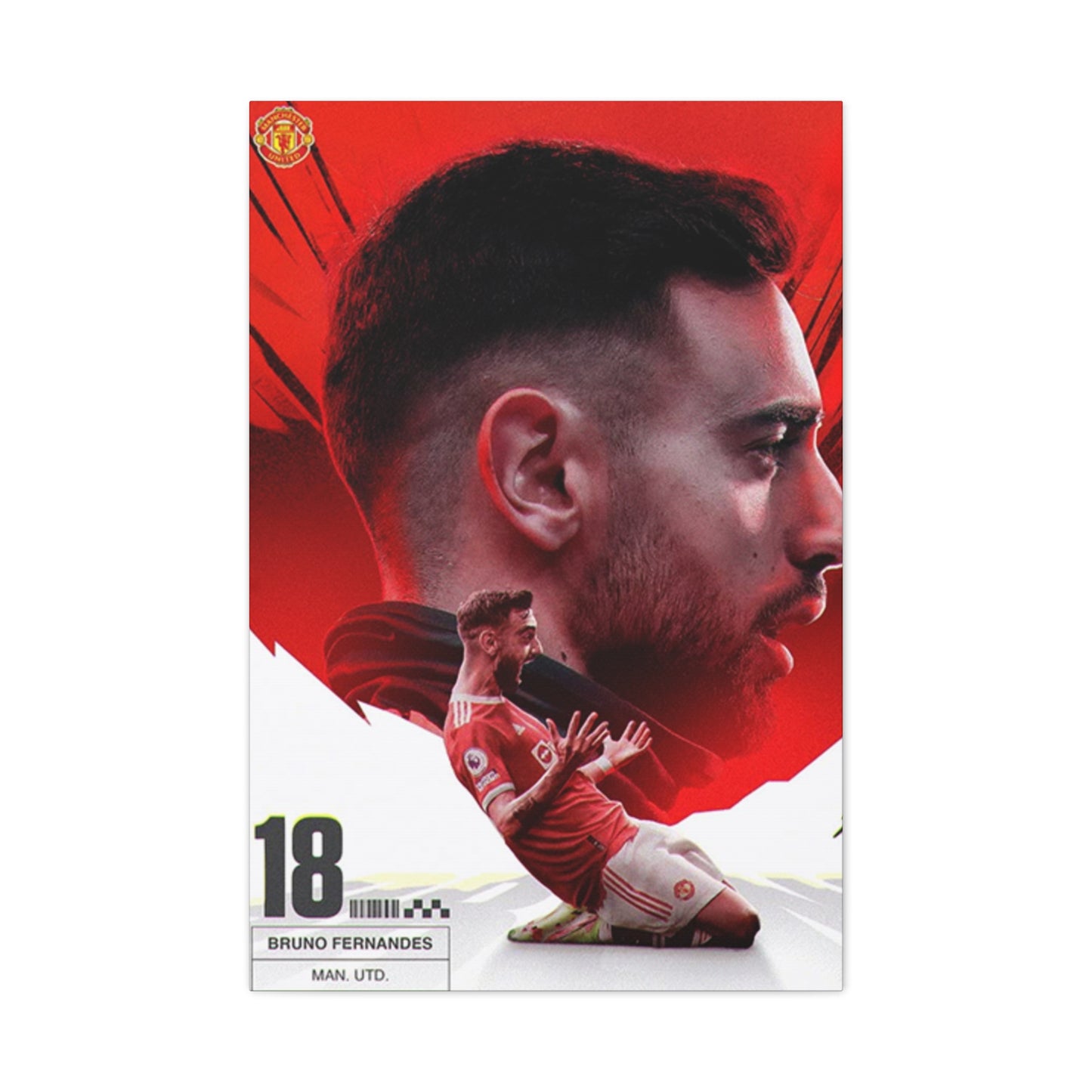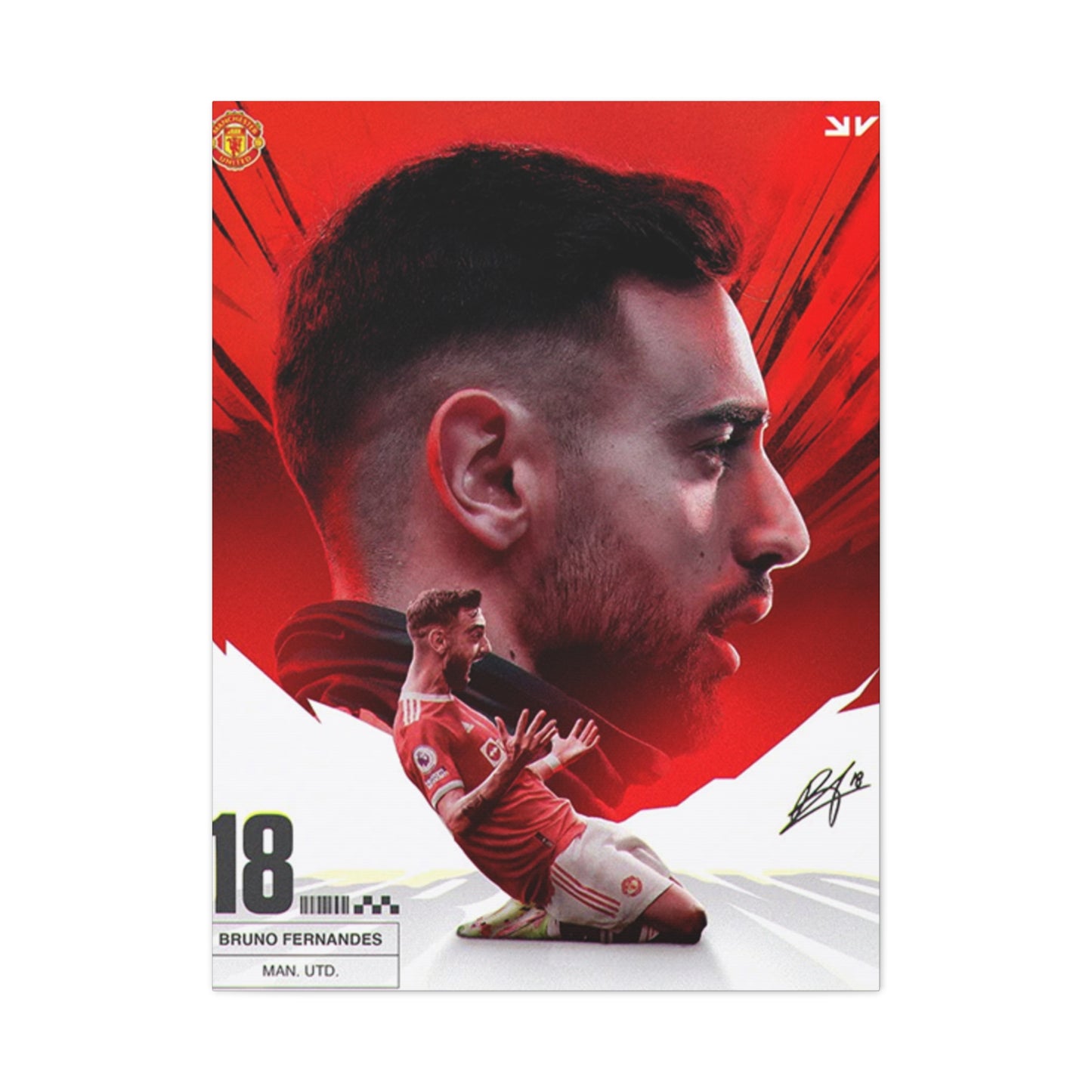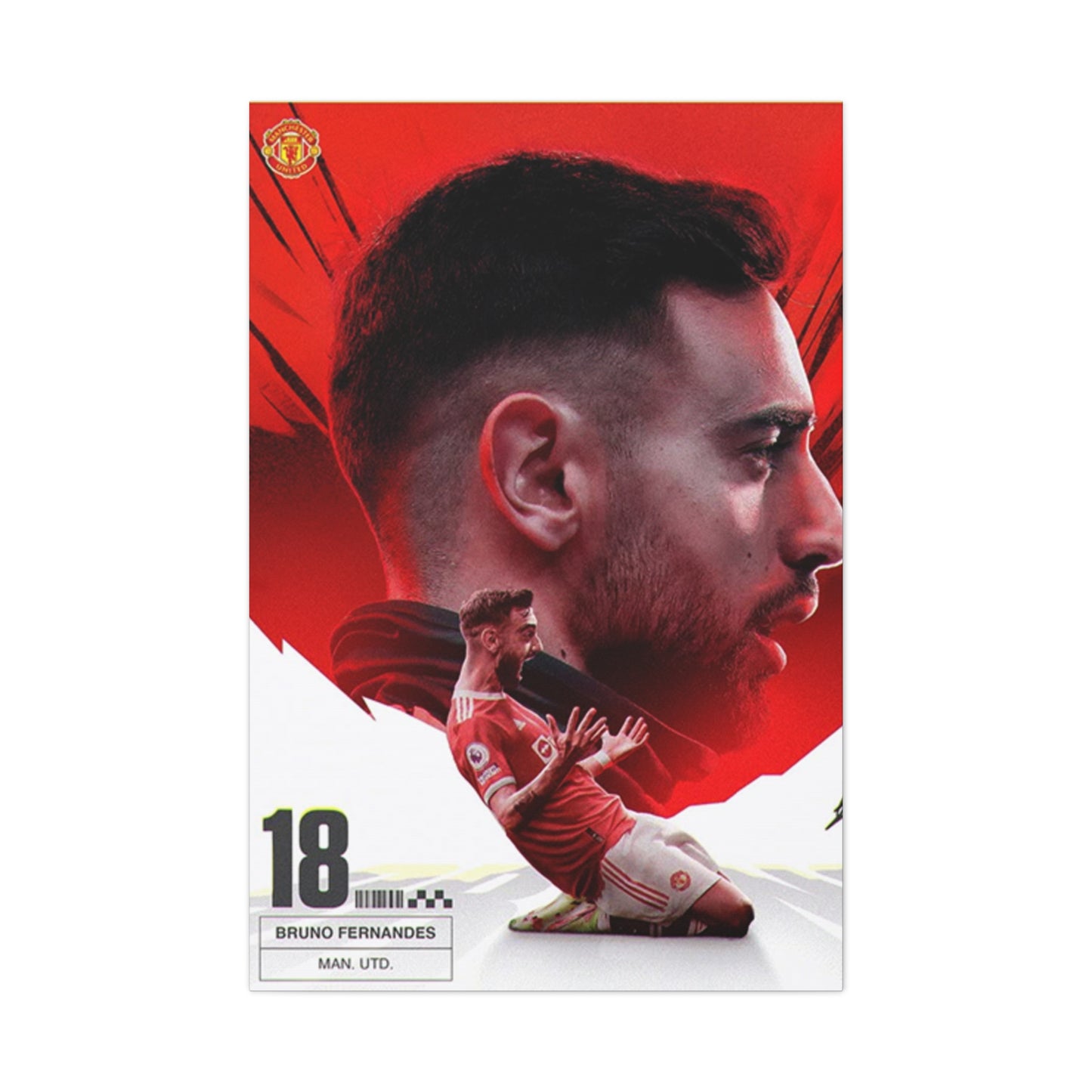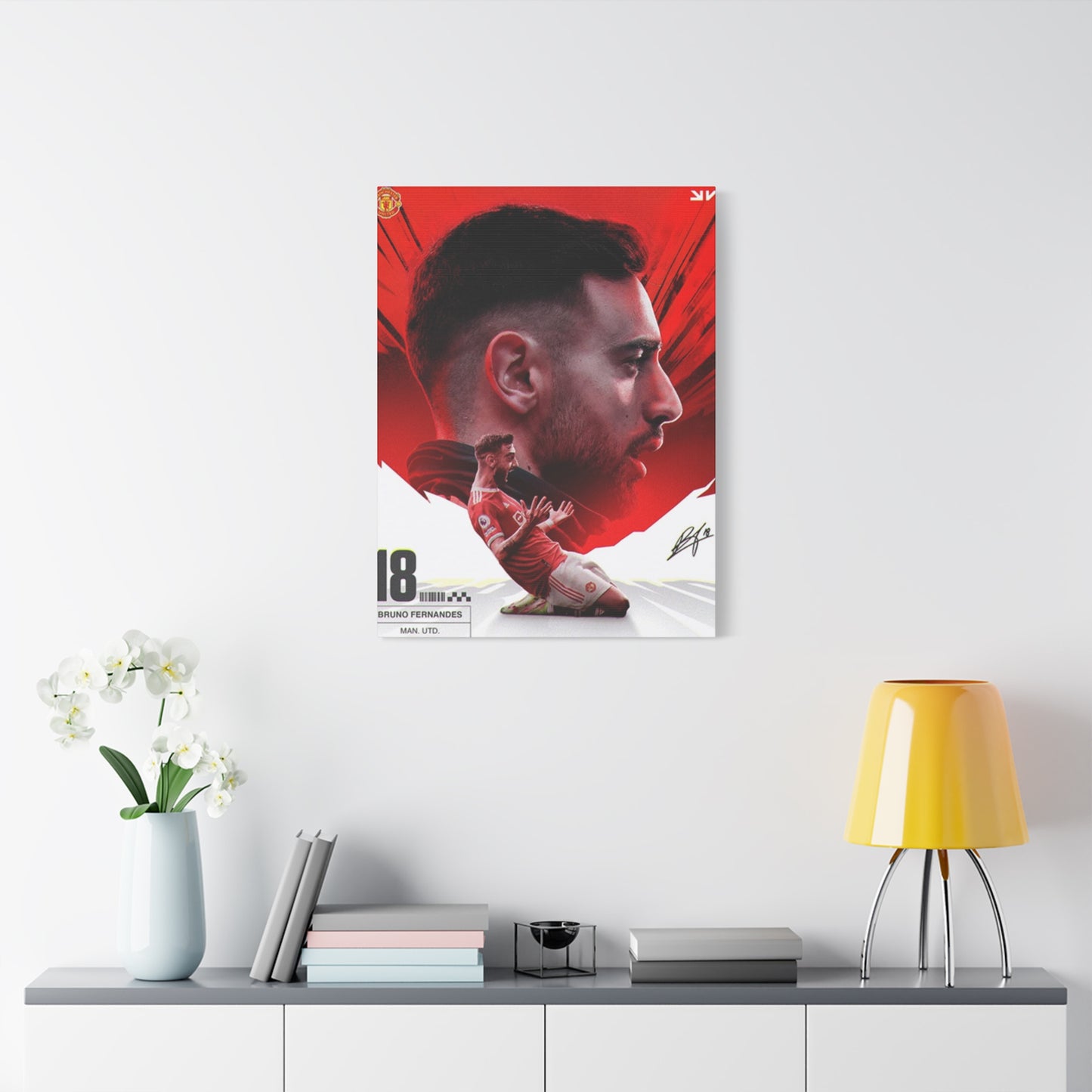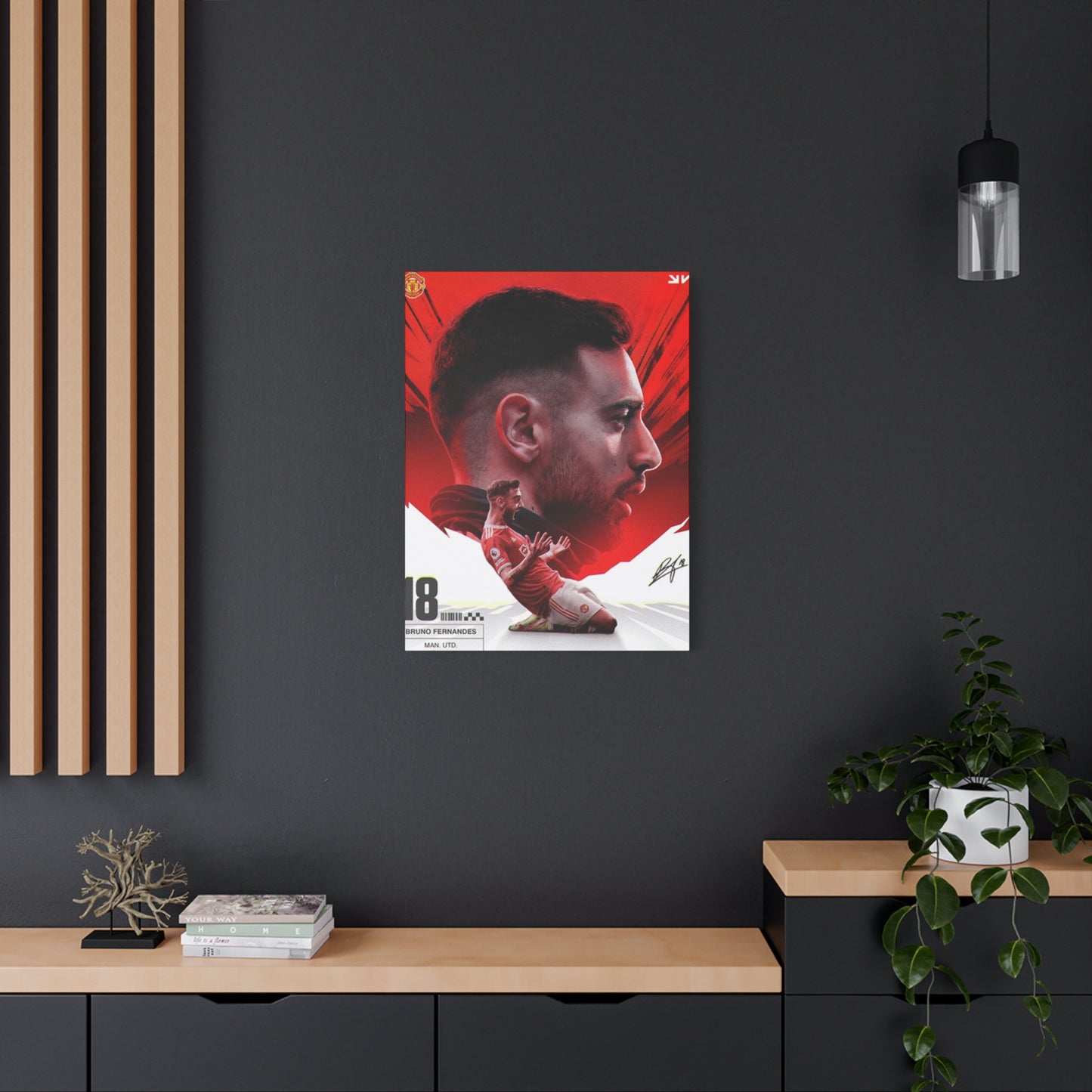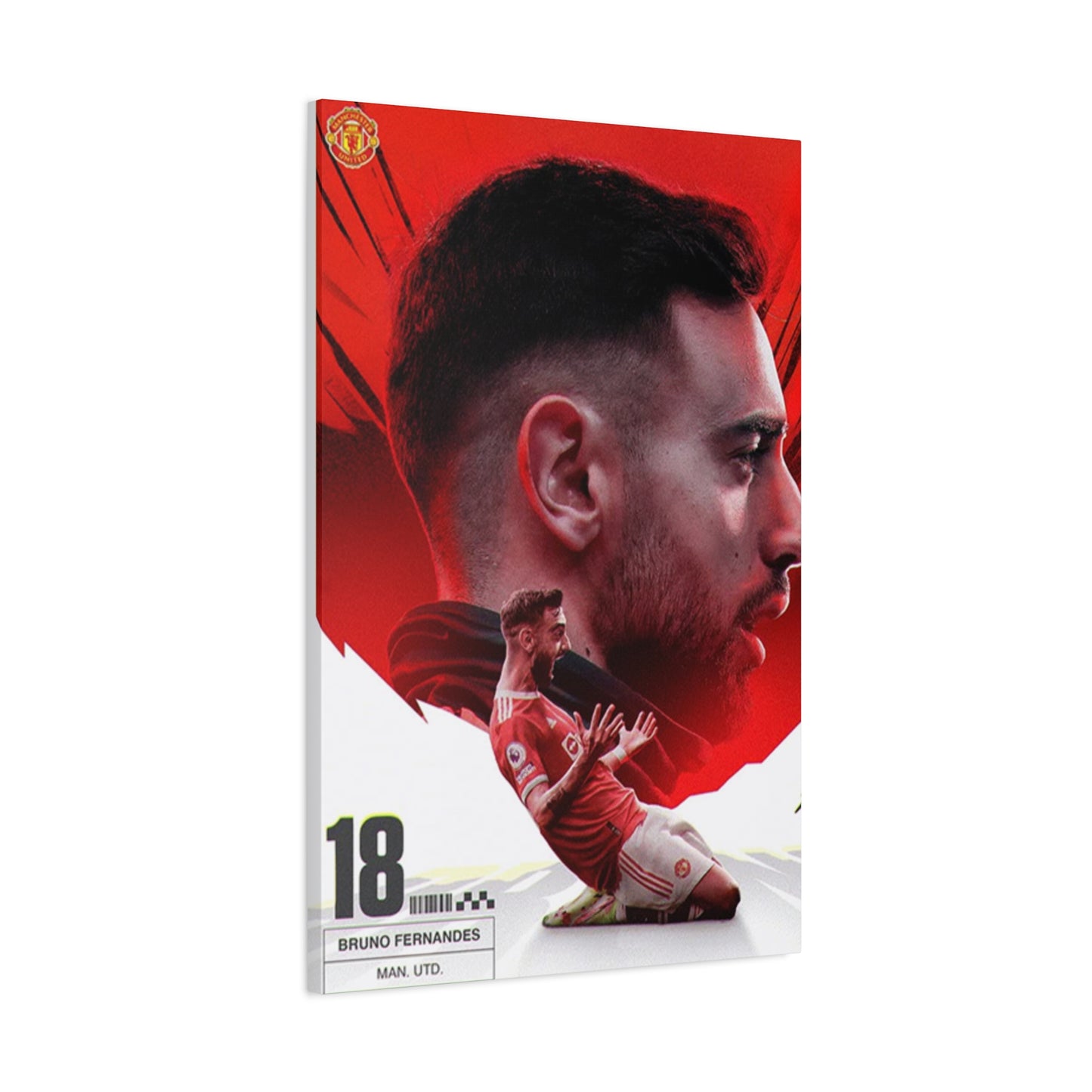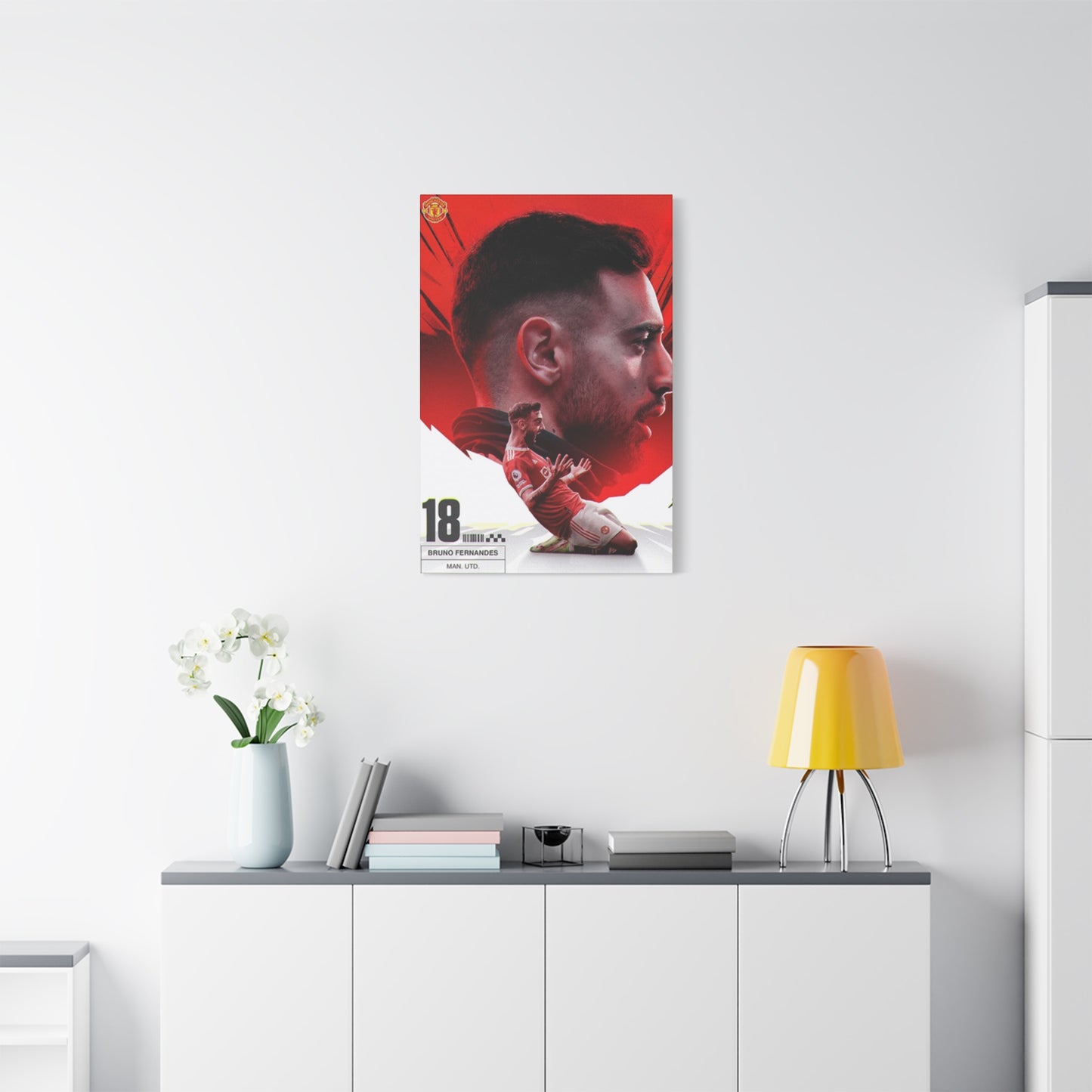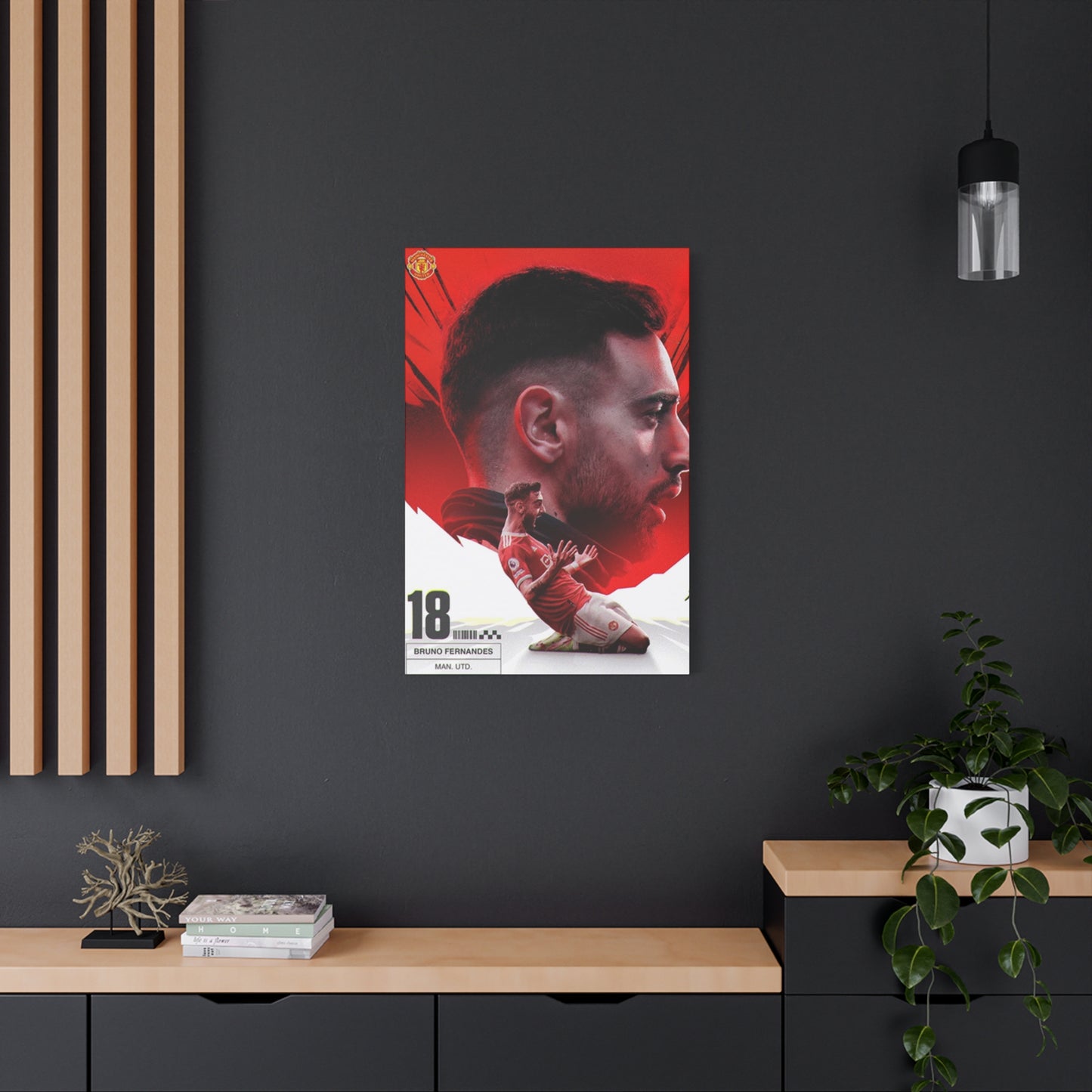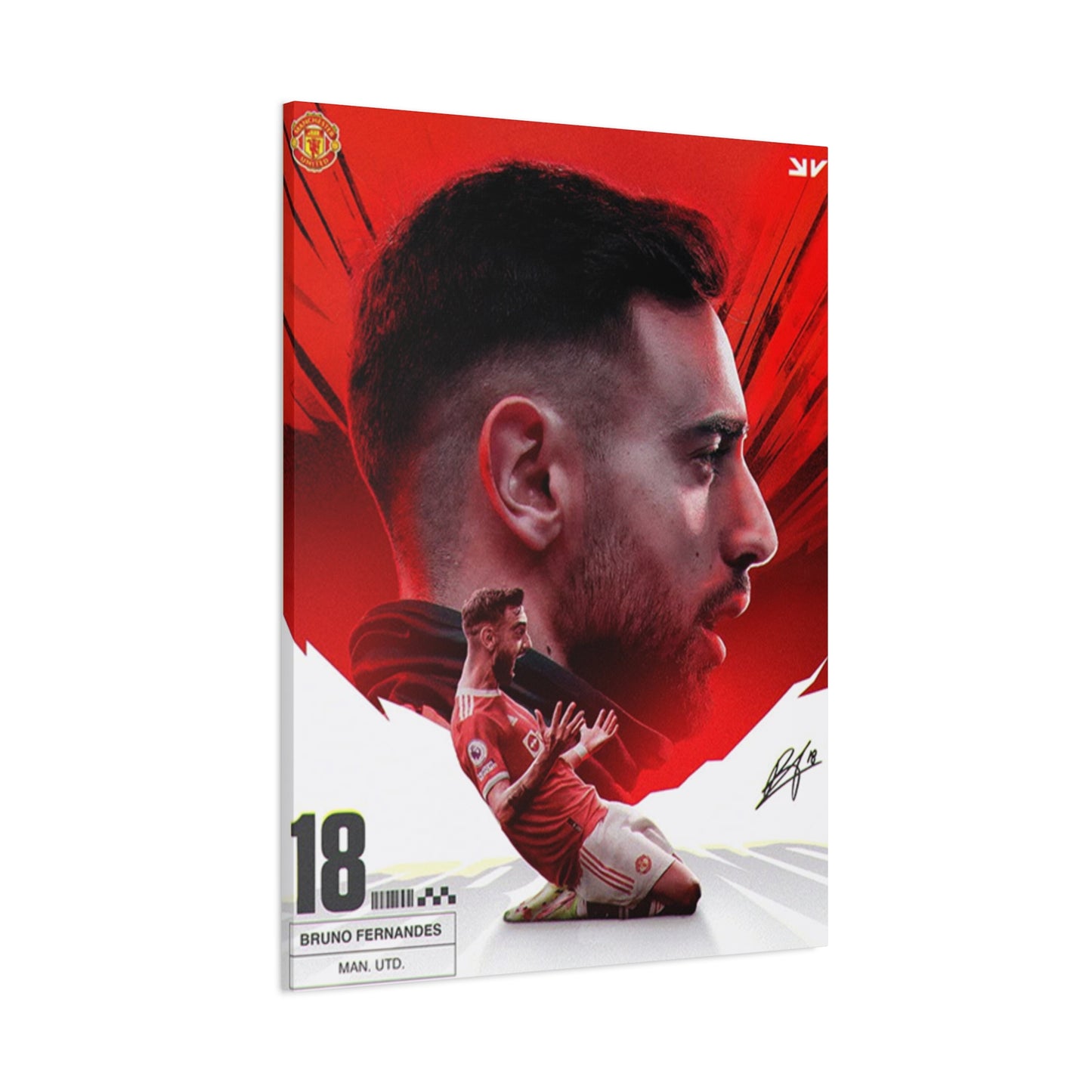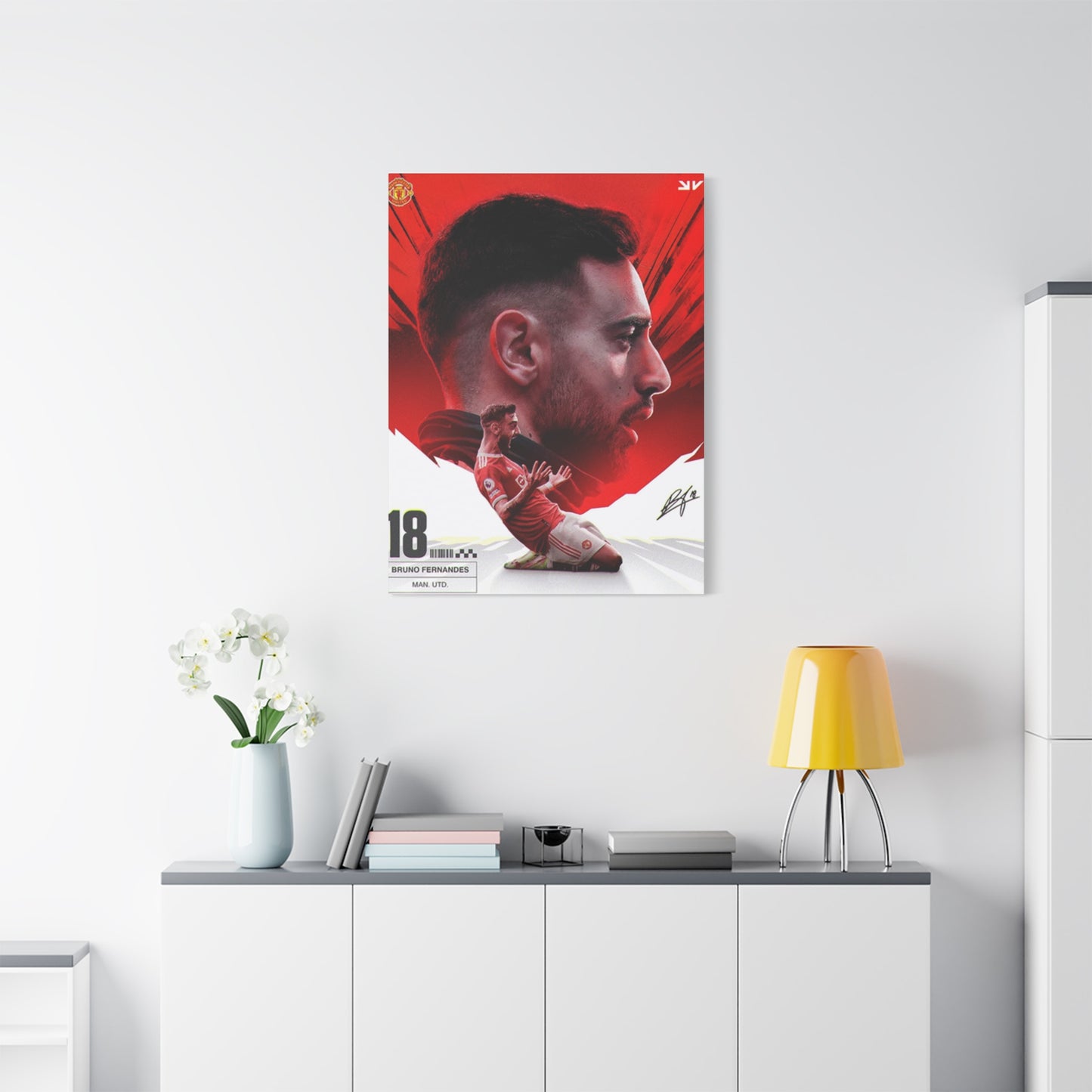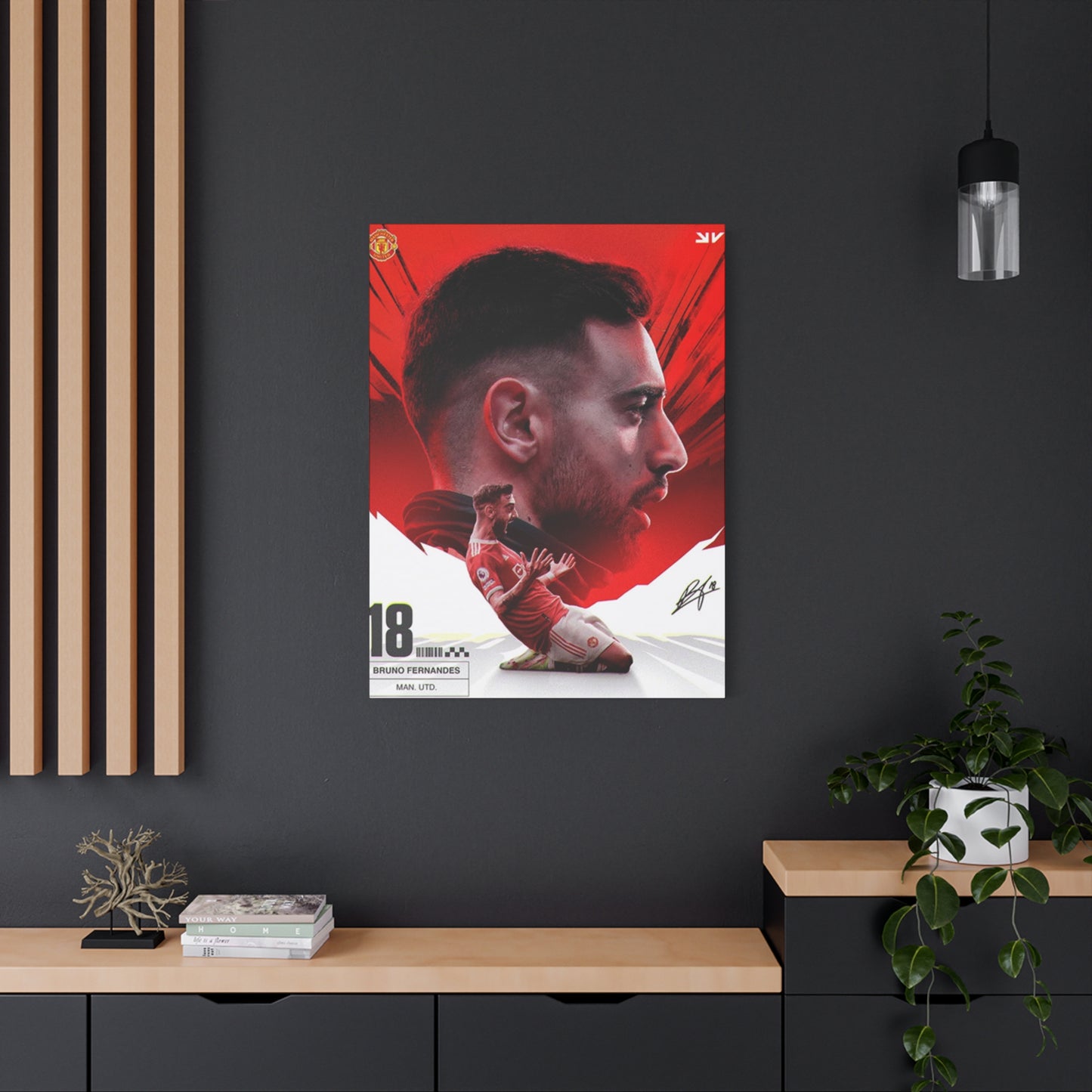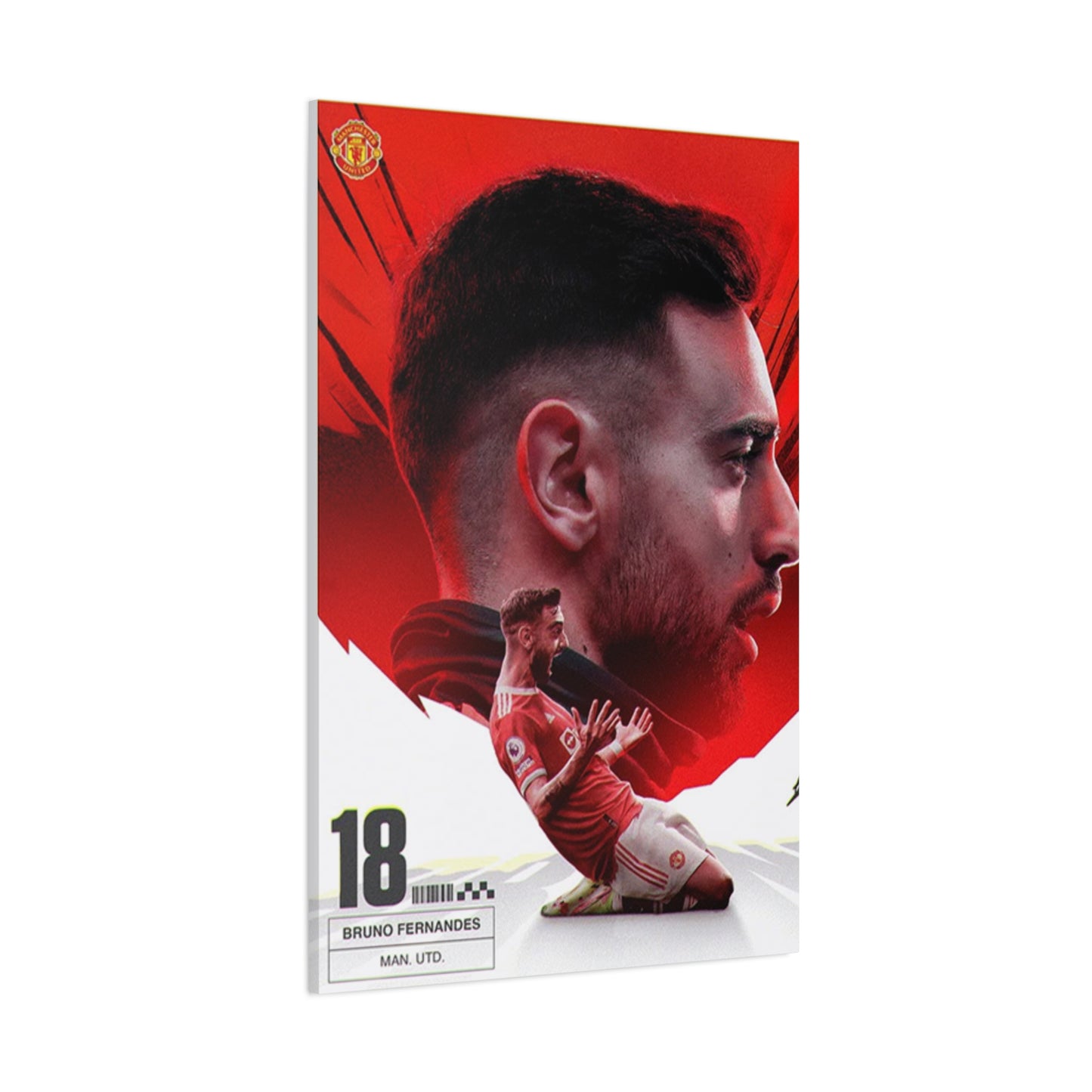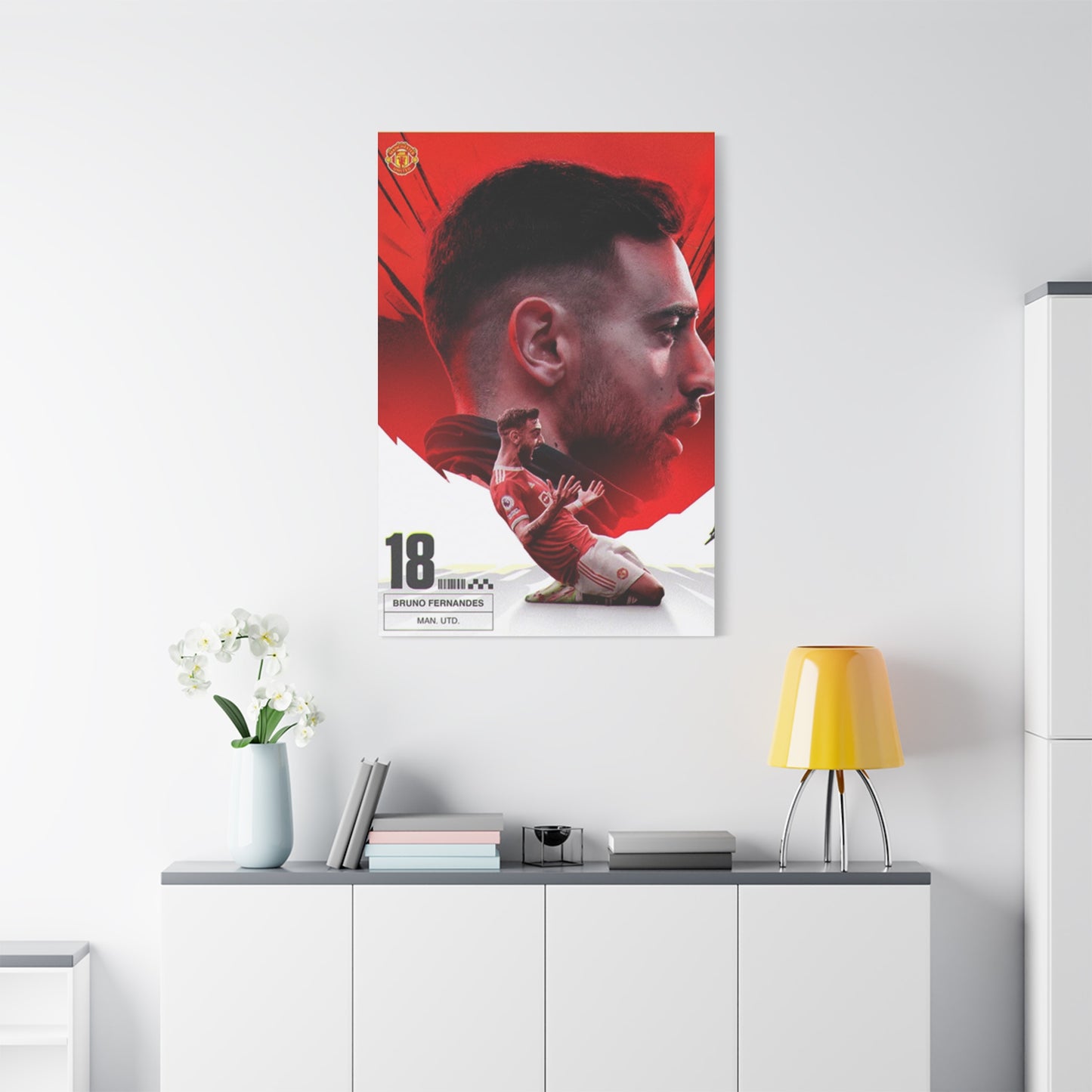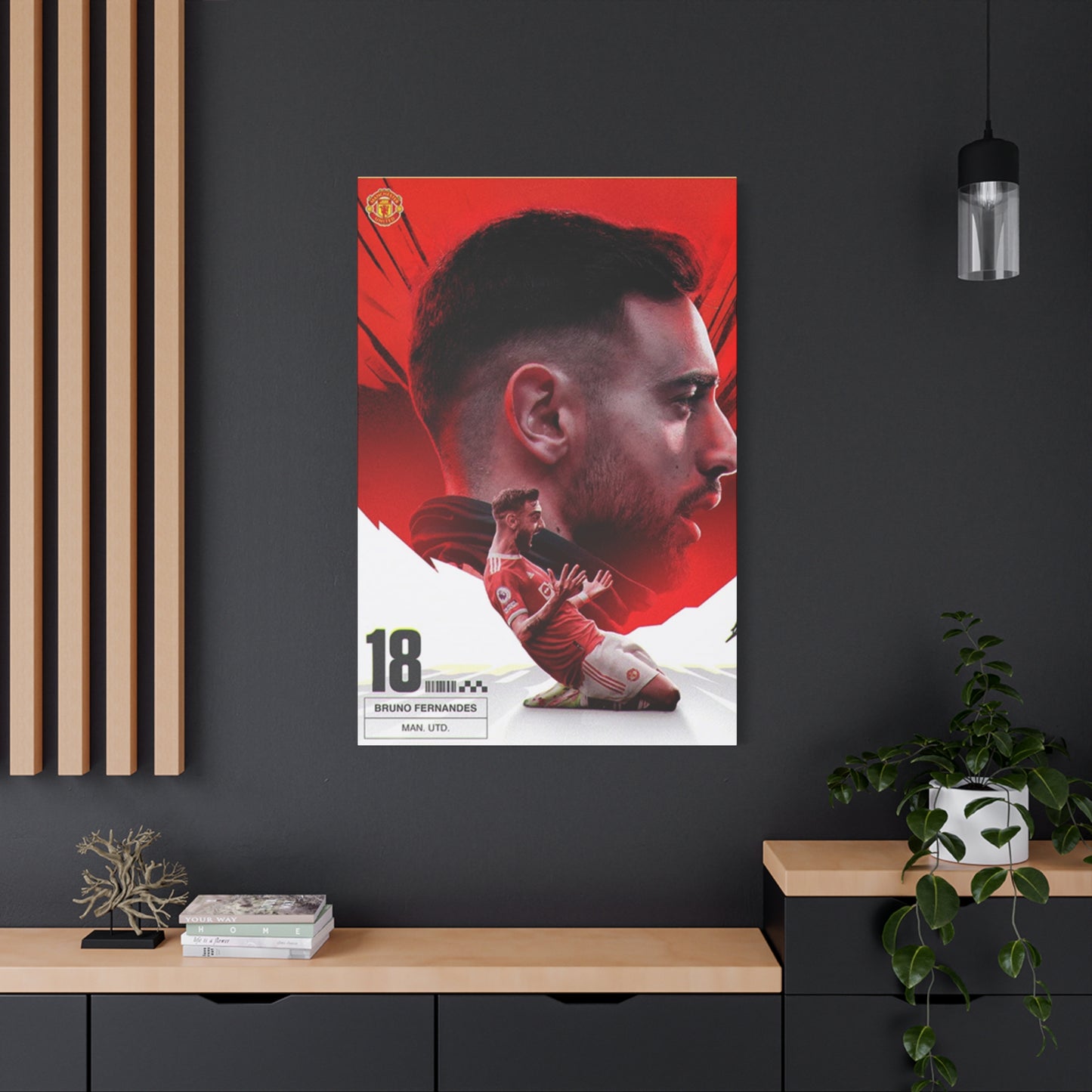Football Canvas Wall Art: Capturing Athletic Excellence Through Visual Expression
Football represents more than just a sport; it embodies passion, dedication, teamwork, and the relentless pursuit of excellence. When this athletic artform meets canvas, extraordinary visual narratives emerge that capture the essence of America's favorite pastime. The intersection of football and artistic expression creates compelling works that resonate with fans, athletes, and art enthusiasts alike, transforming moments of athletic brilliance into timeless visual celebrations.
The world of football canvas art encompasses a vast spectrum of creative interpretations, from realistic portrayals of game action to abstract representations of the sport's emotional intensity. Artists have discovered countless ways to translate the energy, drama, and cultural significance of football into visual mediums that speak to viewers on multiple levels. Whether depicting the raw power of a linebacker's tackle, the graceful arc of a perfectly thrown spiral, or the collective euphoria of fans celebrating victory, football art captures moments that define not just games, but entire communities and cultures.
Contemporary football art has evolved beyond simple documentation of sporting events to become a sophisticated form of cultural commentary and artistic expression. Modern artists working in this genre understand that football serves as a metaphor for larger themes in American society, including perseverance, teamwork, diversity, and the pursuit of dreams against overwhelming odds. This deeper understanding infuses their work with layers of meaning that extend far beyond the playing field.
The technical aspects of creating compelling football art require artists to master the representation of motion, emotion, and atmosphere. Football's fast-paced nature demands artistic techniques that can convey speed, impact, and the split-second decisions that determine game outcomes. Successful football artists develop unique approaches to capturing these dynamic elements while maintaining compositional integrity and visual appeal.
Canvas serves as an ideal medium for football art due to its ability to accommodate various painting techniques and its durability for displaying works that celebrate such an energetic subject matter. The texture of canvas allows artists to build layers of paint that can represent everything from the rough surface of a football to the smooth precision of a perfectly executed play. Additionally, canvas works well for both intimate pieces suitable for personal spaces and large-scale installations that command attention in public venues.
The Evolution of Sports Art in American Culture
Historical Foundations of Athletic Representation
The artistic documentation of athletic endeavors in American culture traces its roots back to the late 19th century, when illustrators and painters began recognizing sports as legitimate subjects worthy of serious artistic attention. Early football art emerged alongside the sport itself, with newspaper illustrators and magazine artists creating the first visual narratives that would eventually evolve into the sophisticated canvas works we see today. These pioneering artists established fundamental approaches to capturing athletic movement and competitive spirit that continue to influence contemporary football art.
The transition from illustration to fine art representation marked a crucial evolution in how society viewed both athletics and artistic subject matter. As football gained cultural prominence throughout the 20th century, artists began approaching the sport with the same seriousness previously reserved for traditional subjects like portraiture, landscape, and still life. This shift reflected broader changes in American cultural values, where athletic achievement began to be recognized as a legitimate form of human excellence deserving of artistic celebration.
Regional variations in early football art reflected the diverse ways different communities embraced and interpreted the sport. Southern artists often emphasized the pageantry and tradition surrounding college football, creating works that captured the social and cultural significance of game day rituals. Midwestern artists frequently focused on the industrial and working-class aspects of football, depicting the sport as an extension of American values of hard work and determination. These regional differences continue to influence contemporary football art, creating a rich tapestry of interpretative approaches.
The influence of broader art movements on football representation cannot be understated. The realist movement of the early 20th century encouraged artists to depict athletic subjects with unprecedented attention to detail and accuracy. Later, abstract expressionism provided new tools for capturing the emotional intensity of competitive sports. Pop art movement of the 1960s elevated sports imagery to new levels of cultural significance, treating athletic subjects with the same artistic seriousness as any other aspect of American life.
The Rise of Professional Sports Art Market
The commercialization of professional football created new opportunities and demands for artistic representation, as teams, sponsors, and media organizations recognized the marketing value of compelling visual narratives. This commercial interest led to the development of a professional sports art market that supported artists specializing in athletic subjects while maintaining artistic integrity and creative innovation. The balance between commercial appeal and artistic merit became a defining characteristic of successful football art.
Corporate patronage transformed the scale and scope of football art, enabling artists to undertake ambitious projects that would have been impossible without substantial financial backing. Stadium installations, team headquarters commissions, and corporate collections created venues for football art that reached audiences far beyond traditional gallery settings. This expanded exposure helped legitimize football art within the broader art world while introducing artistic excellence to sports fans who might not otherwise engage with fine art.
The development of sports memorabilia markets created additional opportunities for football artists, as collectors began seeking original artworks that captured their favorite teams, players, and moments. This collector interest encouraged artists to develop distinctive styles and approaches that would be recognizable and sought after in the marketplace. The intersection of artistic quality and collectible value created a unique niche within the art world that rewarded both technical skill and sports knowledge.
Media coverage of sports art exhibitions and installations helped establish football art as a legitimate artistic category worthy of critical attention and scholarly study. Art critics began developing frameworks for evaluating sports art that considered both aesthetic merit and the artist's success in capturing the essence of athletic competition. This critical attention elevated the discourse surrounding football art and encouraged artists to push the boundaries of what was possible within the genre.
Contemporary Digital Influences on Traditional Canvas Work
The digital revolution has profoundly impacted football canvas art, providing artists with new tools for research, composition planning, and technical execution while simultaneously creating new challenges for maintaining the authentic, handcrafted quality that distinguishes canvas work from digital reproduction. Contemporary football artists must navigate the balance between embracing technological advantages and preserving the tactile, physical qualities that make canvas art uniquely compelling and emotionally resonant.
Digital photography and video analysis have revolutionized how artists study and understand athletic movement, providing access to detailed documentation of plays, expressions, and movements that would have been impossible to capture and analyze in previous eras. High-speed photography reveals the subtle mechanics of athletic motion, while multiple camera angles provide comprehensive understanding of spatial relationships and competitive dynamics. This enhanced visual information allows artists to create more accurate and compelling representations of football action.
Computer-aided design tools enable artists to experiment with compositions, color schemes, and lighting effects before committing to canvas, reducing waste and increasing efficiency while maintaining the spontaneity and expressiveness of traditional painting techniques. Digital sketching and planning tools allow artists to explore multiple interpretative approaches and refine their concepts before beginning the irreversible process of painting on canvas. This preparation phase has become an integral part of contemporary football art practice.
The proliferation of digital sports media has created both opportunities and challenges for canvas artists, as audiences become accustomed to high-definition, slow-motion replays that reveal every detail of athletic performance. Canvas artists must compete with this visual sophistication while offering something unique that digital media cannot provide: the physical presence, textural richness, and emotional immediacy of painted surfaces. This competition has driven innovation in football art techniques and approaches.
Social media platforms have transformed how football art reaches audiences, enabling artists to build followings, share work-in-progress images, and connect directly with fans, players, and collectors without traditional gallery intermediation. This direct connection has democratized the football art market while creating new pressures for artists to maintain consistent online presence and engage with digital communities. The balance between creating art and promoting it through digital channels has become a crucial skill for contemporary football artists.
Training Exercises Portrayed Through Artistic Expression
Athletic preparation forms the foundation of football excellence, and artists have found rich inspiration in depicting the rigorous training regimens that shape players into elite performers. These artistic interpretations of football drills capture not just the physical movements involved, but the mental discipline and emotional commitment required for athletic success. The visual representation of training exercises reveals the dedication that occurs behind the scenes, long before players take the field for actual competition.
Artists approaching drill-focused subjects often emphasize the repetitive nature of training while highlighting the precision and technique required for mastery. Ladder drills, cone exercises, and blocking sleds become geometric elements within compositions, creating visual rhythms that mirror the systematic approach to athletic development. The artistic challenge lies in making these routine exercises appear dynamic and engaging, transforming what might seem mundane into compelling visual narratives.
The psychological aspects of training provide additional layers for artistic interpretation. The mental toughness developed through repetitive drills, the camaraderie built among teammates during grueling practice sessions, and the individual determination required to push beyond physical limitations all offer rich material for artistic exploration. Artists working in this area often focus on facial expressions, body language, and environmental details that communicate these intangible but crucial elements of athletic preparation.
Strength and Conditioning Art Themes
The weight room represents a sanctuary of transformation where raw potential meets disciplined effort, creating compelling subject matter for artists interested in exploring themes of personal development and physical metamorphosis. The visual elements of strength training environments provide rich compositional opportunities, from the geometric patterns of weight plates and equipment to the dramatic lighting effects created by industrial fixtures illuminating spaces dedicated to athletic improvement.
Artists depicting strength training often focus on the moment of maximum effort, when athletes push beyond their perceived limitations to achieve new levels of performance. These pivotal moments reveal character, determination, and the internal struggle that defines athletic excellence. The physical strain visible in facial expressions and body posture provides emotional content that transcends mere documentation of exercise routines to become portraits of human determination and resilience.
The equipment itself becomes a character in strength training artwork, with barbells, dumbbells, and machines serving as both tools and symbols of the commitment required for athletic success. Artists might emphasize the worn surfaces of frequently used equipment, suggesting the countless hours of dedication that have shaped both the tools and the athletes who use them. The relationship between human and machine becomes a metaphor for the systematic approach required for physical development.
Environmental details in strength training art often emphasize the spartan, utilitarian nature of these spaces, where function takes precedence over comfort or aesthetics. The honest, no-nonsense atmosphere of weight rooms appeals to artists interested in depicting authentic dedication without pretense or glamour. Harsh lighting, concrete floors, and basic equipment create visual environments that emphasize the serious, workmanlike approach to athletic improvement.
Color palettes in strength training art frequently employ earth tones and metallic hues that reflect the industrial nature of the equipment and environments. The contrast between warm flesh tones and cool metal surfaces creates visual tension that mirrors the challenge of human will overcoming physical resistance. Strategic use of dramatic lighting effects can emphasize the sculptural qualities of both athletic physiques and training equipment.
The temporal aspects of strength training provide opportunities for artists to explore themes of progression, consistency, and the gradual accumulation of small improvements that lead to significant transformation over time. Some artists create series that document the evolution of an athlete's physique or technique, while others focus on single moments that encapsulate the entire journey of athletic development.
Agility and Speed Development Visualization
The fluid grace of athletes navigating agility courses provides artists with opportunities to explore movement, rhythm, and the intersection of mental acuity with physical coordination. Agility training combines elements of dance-like movement with athletic purpose, creating visual narratives that celebrate both the aesthetic beauty of human motion and the functional excellence required for competitive success in football.
Cone drills and ladder exercises create geometric frameworks within compositions that provide structure while allowing for the organic, flowing movements of athletes navigating prescribed patterns. The contrast between rigid training apparatus and fluid human motion creates visual tension that mirrors the discipline required to maintain precision while moving at maximum speed. Artists often emphasize this juxtaposition to highlight the technical skill involved in agility development.
The repetitive nature of agility training allows artists to explore themes of persistence, muscle memory, and the gradual refinement of movement patterns through countless repetitions. The visual representation of this repetition might involve sequential imagery showing multiple phases of a drill, or compositional elements that suggest the rhythm and flow of repeated movements. The challenge lies in making repetitive action appear fresh and engaging rather than monotonous.
Footwork receives particular attention in agility-focused art, as the precise placement and timing of steps determines success in these exercises. Artists might emphasize the relationship between feet and training apparatus, showing the careful navigation required to maintain speed while preserving accuracy. The feet become focal points that represent the foundation of athletic excellence and the attention to detail required for competitive success.
The mental concentration required for agility training provides psychological depth to these artistic interpretations. Athletes must maintain focus and precision while operating at high speeds, creating internal tension that can be expressed through facial expressions, body language, and compositional elements that suggest the intense concentration required for successful execution of complex movement patterns.
Environmental factors in agility training art often emphasize the controlled, measured nature of these practice environments, where every element is precisely positioned to create specific training challenges. The careful arrangement of cones, ladders, and other apparatus creates geometric patterns that artists can use as compositional elements while emphasizing the systematic approach to athletic development.
Team Building Exercise Representations
The collaborative aspects of football training provide rich material for artists interested in exploring themes of unity, communication, and the development of trust relationships that enable team success. Team building exercises offer unique visual opportunities to depict multiple athletes working together toward common goals, creating compositional challenges and opportunities that differ significantly from individual training representations.
Trust exercises, such as blindfolded drills or partner-dependent activities, create dramatic moments where vulnerability and mutual dependence become visible themes. Artists can capture the tension and release involved in these exercises, where athletes must overcome natural self-protection instincts to rely completely on teammates. These moments reveal character and team chemistry in ways that game action cannot fully display.
Communication drills provide opportunities to explore the verbal and non-verbal language that enables team coordination. Artists might focus on the intense concentration visible in faces during complex communication exercises, or emphasize hand signals, eye contact, and body language that constitute the vocabulary of team coordination. These elements become visual metaphors for the trust and understanding required for team success.
Group physical challenges, such as team relay races or collective lifting exercises, create compositions where individual effort combines with group coordination to achieve results impossible through individual action alone. The visual representation of shared effort, mutual support, and collective celebration provides artistic opportunities to explore themes of unity and shared purpose that extend beyond football into broader human experience.
Leadership development within team building exercises offers additional narrative possibilities, as artists can capture moments when individuals step forward to guide, encourage, or organize group efforts. These leadership moments reveal character traits and relationship dynamics that contribute to team success, providing subject matter that combines individual portrait opportunities with group interaction themes.
The emotional range present in team building exercises provides depth for artistic interpretation, from initial hesitation and uncertainty through growing confidence and ultimate celebration of collective achievement. Artists can capture the full arc of emotional development within these exercises, creating works that resonate with viewers' own experiences of overcoming challenges through cooperation and mutual support.
Powerful Strokes and Dynamic Line Work in Athletic Art
The foundation of compelling football canvas art lies in the artist's ability to employ bold, decisive line work that captures the power and movement inherent in the sport. These strong linear elements serve as the structural backbone of compositions, guiding viewers' eyes through scenes of athletic action while conveying the raw energy and determination that defines football competition. The strategic use of bold lines creates visual pathways that mirror the strategic movements of players on the field.
Artists working with bold line techniques often draw inspiration from the geometric nature of football itself, where precise angles, calculated trajectories, and strategic positioning determine success or failure. These mathematical precision points translate beautifully into artistic compositions where strong diagonal lines represent the explosive movement of players breaking from their stances, while curved lines capture the graceful arc of passes cutting through the air toward their intended targets.
The psychological impact of bold line work in football art cannot be understated, as these decisive strokes communicate confidence, strength, and purpose – qualities that directly parallel the mindset required for athletic excellence. When viewers encounter artwork featuring prominent linear elements, they unconsciously associate these visual characteristics with the mental toughness and unwavering determination that successful football players must possess throughout their careers.
Brushwork Techniques for Athletic Motion
The translation of athletic movement into painted form requires specialized brushwork techniques that can suggest speed, power, and directional force while maintaining compositional coherence and visual appeal. Artists develop distinctive approaches to mark-making that become signatures of their individual styles while serving the functional purpose of accurately representing the complex dynamics of football action.
Directional brushstrokes play crucial roles in suggesting movement and energy flow within compositions. Horizontal strokes might represent the lateral movement of defensive backs covering receivers, while vertical strokes could emphasize the explosive upward motion of players jumping for contested passes. Diagonal strokes often convey the most dynamic energy, representing the cutting movements, tackles, and directional changes that create excitement and tension in football action.
The pressure and speed of brush application directly impact the emotional tone of athletic representations. Heavy, aggressive brushwork might be employed to represent the violent collisions and physical intensity of football contact, while lighter, more fluid strokes could capture the finesse and precision required for skilled position play. Artists must match their technical approach to the emotional content they wish to convey.
Layering techniques enable artists to build complex representations of athletic action, where initial bold strokes establish primary movement patterns and subsequent layers add refinement, detail, and emotional nuance. This additive approach mirrors the complexity of football itself, where basic movements combine with tactical refinements to create sophisticated strategic expressions.
The size and scale of brushwork within compositions can direct attention and establish hierarchies of importance within complex scenes. Larger, bolder strokes naturally draw viewer attention and might be reserved for primary action elements, while smaller, more refined marks provide supporting detail and environmental context. This variation in mark-making scale creates visual rhythm and compositional balance.
Texture creation through varied brushwork approaches allows artists to differentiate between various surface qualities present in football scenes. Rough, aggressive marks might represent the coarse texture of artificial turf, while smooth, flowing strokes could capture the sleek surfaces of modern uniforms and equipment. These textural variations add sensory richness to visual representations.
Color Application for Maximum Impact
The strategic use of color in football art serves multiple functions simultaneously: establishing emotional tone, directing attention, creating spatial depth, and enhancing the overall visual impact of compositions. Understanding color psychology and its interaction with athletic subject matter enables artists to create works that resonate emotionally with viewers while accurately representing the visual reality of football competition.
Team color schemes provide natural starting points for football art color palettes, but sophisticated artists expand beyond official colors to create more nuanced and emotionally compelling works. The challenge lies in honoring team identity while avoiding the limitations that strict adherence to official colors might impose on artistic expression and emotional range.
Warm colors – reds, oranges, and yellows – naturally convey energy, excitement, and aggressive action, making them ideal choices for representing offensive plays, scoring moments, and celebratory scenes. These colors advance visually, drawing attention and creating focal points within compositions while suggesting the forward momentum and positive energy associated with successful athletic performance.
Cool colors – blues, greens, and purples – can represent strategic thinking, defensive positioning, and the calm calculation required for successful football execution. These colors recede visually, making them useful for background elements and supporting compositional areas while contributing to overall emotional balance within dynamic scenes.
Contrast relationships between warm and cool colors create visual tension that mirrors the competitive tension present in football games. High contrast combinations suggest conflict, competition, and decisive moments, while more harmonious color relationships might represent teamwork, coordination, and successful execution of game plans.
The saturation levels of colors impact emotional intensity, with highly saturated colors creating excitement and energy while more muted tones suggest sophistication, strategy, and controlled power. Artists must balance these elements to match their color choices with the specific emotional content they wish to convey through their football representations.
Lighting effects achieved through color manipulation can transform the entire mood and atmosphere of football art. The warm, golden light of autumn afternoon games creates different emotional associations than the harsh, artificial illumination of night games under stadium lights. Artists who understand these lighting relationships can use color to transport viewers into specific game environments and emotional states.
Compositional Dynamics in Sports Art
The arrangement of visual elements within football art compositions requires understanding of both traditional artistic principles and the unique spatial relationships that characterize football action. Successful compositions guide viewer attention through scenes of complex action while maintaining visual balance and emotional coherence throughout the viewing experience.
The rule of thirds provides a foundational framework for football art composition, but artists must adapt this classical approach to accommodate the linear nature of football fields and the directional movement that characterizes most game action. The strategic placement of primary focal points along compositional thirds creates visual stability while allowing for dynamic action representation.
Leading lines within football compositions often follow the natural geometry of the sport itself: yard markers, sidelines, and goal posts provide strong linear elements that artists can use to direct attention and create depth within their works. These existing linear elements become integral parts of artistic compositions rather than mere background details.
Foreground, middle ground, and background relationships become particularly important in football art, where multiple layers of action often occur simultaneously. Artists must decide which elements deserve primary attention while ensuring that supporting action enhances rather than competes with main focal points. This layering creates compositional depth that mirrors the strategic complexity of the sport itself.
Asymmetrical balance often proves more effective than symmetrical arrangements in football art, as the dynamic nature of athletic action rarely creates naturally balanced compositions. Artists must use visual weight, color placement, and compositional tension to create stability within inherently unstable action scenes.
The edges of compositions require careful attention in football art, as the sport naturally extends beyond any single viewpoint. Artists must decide whether to crop action at composition edges or to suggest continuation of action beyond the visible frame. These decisions significantly impact how viewers perceive and interact with the completed works.
Negative space plays crucial roles in football compositions, where areas of reduced activity can provide visual rest and emphasize areas of intense action. The strategic use of empty field space, clear sky areas, or simplified background elements can enhance rather than detract from complex action scenes by providing visual breathing room and compositional balance.
Collaborative Spirit and Unity in Athletic Art
The essence of football lies not in individual brilliance alone, but in the seamless coordination of eleven players working toward a common goal, and this collaborative spirit provides endless inspiration for artists seeking to capture the human elements that make football uniquely compelling. Artistic representations of teamwork in football extend beyond simple depictions of players in uniform to explore the deeper bonds, shared sacrifices, and mutual trust that enable groups of individuals to achieve extraordinary collective success.
Visual storytelling techniques in teamwork-focused art often emphasize the interconnectedness of players through compositional elements such as overlapping figures, shared color schemes, and unified directional movement that suggests coordinated action. Artists might depict the moment when offensive linemen move in perfect synchronization to create running lanes, or capture the precise timing required for receivers and quarterbacks to complete complex passing plays that require split-second coordination and absolute trust.
The emotional dimensions of football teamwork offer rich material for artistic interpretation, particularly the moments when individual ego must be subordinated to collective success. Artists explore themes such as the veteran player mentoring younger teammates, the sacrifice of personal statistics for team victory, and the development of trust relationships that extend far beyond the playing field into lifelong friendships and mutual respect.
Huddle Formations and Strategic Planning
The football huddle represents one of sport's most iconic images of collective focus and shared purpose, providing artists with compositional opportunities that naturally emphasize unity, communication, and strategic coordination. The circular or semi-circular formation of players creates geometric frameworks that artists can use to explore themes of inclusion, shared knowledge, and collective decision-making under pressure.
The physical proximity required in huddle formations creates intimate spaces within the larger context of stadium environments, offering artists opportunities to explore the contrast between private team moments and public performance. The hushed intensity of huddle conversations contrasts dramatically with the noise and chaos of competitive action, creating emotional dynamics that sophisticated artists can capture and amplify through their representational choices.
Leadership dynamics within huddles provide rich character study opportunities, as quarterbacks and team captains assume roles as communicators, motivators, and decision-makers. Artists can capture the body language, facial expressions, and gestural communication that enable leaders to convey complex strategic information while building confidence and maintaining team focus during critical game moments.
The temporal aspects of huddle formations offer artistic opportunities to explore the calm before the storm, where strategic planning meets emotional preparation in concentrated moments of team unity. Artists might capture the intense concentration visible in players' faces as they absorb strategic instructions, or emphasize the ritualistic aspects of huddle breaking that transition teams from planning to execution phases of play.
Environmental elements surrounding huddles can enhance the sense of intimacy and focus that characterizes these moments. Artists might use lighting effects to create spotlight-like attention on huddle formations, or employ background blur techniques that emphasize the separation between team strategic moments and the broader competitive environment.
The diversity present in modern football huddles provides opportunities for artists to explore themes of unity across racial, cultural, and socioeconomic differences. The shared commitment to team success that characterizes effective huddles transcends individual differences, creating visual metaphors for broader social cooperation and mutual understanding that extend beyond sports contexts.
Blocking Schemes and Coordinated Protection
The synchronized execution of blocking schemes represents football teamwork at its most fundamental level, where individual technique combines with group coordination to create collective results that enable team success. Artists approaching blocking scheme subjects must capture both the individual skill required for effective blocking and the group timing that transforms individual efforts into coordinated team achievements.
The geometric precision required for effective blocking schemes provides compositional frameworks that artists can use to explore themes of organization, discipline, and systematic execution. The angles, gaps, and spatial relationships that determine blocking success translate directly into visual elements that can create compelling artistic compositions while accurately representing the technical aspects of football strategy.
The physical intensity of blocking action offers opportunities for artists to explore themes of sacrifice, protection, and mutual dependence. Offensive linemen sacrifice individual recognition and statistical achievement to provide protection for teammates, creating human interest stories that extend beyond mere technical execution to encompass themes of selflessness and team commitment.
The split-second timing required for coordinated blocking creates dramatic moments where success or failure hinges on precise execution by multiple players simultaneously. Artists can capture these pivotal moments when individual technique and group coordination combine to determine play outcomes, creating tension and drama that resonate with viewers regardless of their football knowledge.
The communication systems that enable blocking coordination provide additional subject matter for artistic exploration, as pre-snap signals, verbal calls, and non-verbal cues create a complex language of team coordination. Artists might focus on the intense concentration visible in linemen's faces as they process communication and prepare for coordinated action.
The contrast between the violence of blocking action and the strategic sophistication required for coordination creates interesting artistic tensions that sophisticated artists can explore. The combination of physical aggression with mental precision required for effective blocking represents broader themes about controlled force and disciplined aggression that characterize competitive athletics.
Celebration Rituals and Team Bonding
The spontaneous celebrations that follow successful plays provide artists with opportunities to capture pure joy, emotional release, and the collective euphoria that represents the positive rewards of team cooperation and shared achievement. These moments reveal the emotional bonds between teammates and the genuine affection that develops through shared struggle and mutual success.
Touchdown celebrations create natural focal points for artistic compositions, where individual achievement becomes transformed into collective celebration through the participation and support of teammates. The contrast between the individual player who scored and the supporting cast who made the score possible creates visual hierarchies that artists can use to explore themes of individual contribution within collective success.
The spontaneous nature of celebration moments creates challenging but rewarding artistic opportunities, as artists must capture authentic emotional expressions and genuine human reactions rather than posed or artificial representations. The technical challenge of representing spontaneous emotion while maintaining compositional coherence tests artistic skill and observational ability.
The cultural significance of modern celebration rituals provides contemporary relevance for football art, as unique celebration styles become part of player identity and team personality. Artists can capture these cultural expressions while exploring broader themes about individuality within team structures and the ways personal creativity can enhance rather than detract from group success.
The temporal flow from individual achievement through group recognition to collective celebration creates narrative possibilities for artistic exploration. Some artists capture single moments of peak celebration, while others explore the evolution from individual success through team recognition to collective joy through sequential imagery or implied movement within single compositions.
The infectious nature of celebration emotions provides opportunities for artists to explore how positive emotions spread through groups and create shared experiences that strengthen team bonds. The visible progression from individual celebration through teammate participation to collective joy can become a metaphor for the ways shared success creates stronger interpersonal connections.
Victory Moments and Scoring Celebrations in Visual Art
The culmination of athletic effort in successful scoring plays provides artists with some of their most emotionally charged and visually dynamic subject matter, as these moments represent the intersection of preparation, execution, and achievement that defines competitive sports at their highest level. The artistic challenge lies in capturing not just the physical action of scoring, but the emotional release and collective joy that accompanies these pivotal moments in football games.
Touchdown celebrations offer particularly rich material for artistic interpretation, as they combine individual achievement with team success in ways that create natural focal points for dramatic compositions. Artists must balance the spotlight on the scoring player with the supporting context of teammates, opponents, and fans whose reactions contribute to the overall emotional landscape of these crucial moments. The challenge involves creating compositions that honor individual excellence while acknowledging the collaborative effort that made the score possible.
The kinetic energy present in scoring moments requires artistic techniques capable of suggesting movement, speed, and the precise timing that separates successful plays from near misses. Artists working in this area often employ dynamic poses, flowing drapery effects in uniforms, and strategic use of blur effects that suggest rapid movement while maintaining compositional clarity.
Game-Winning Moments and Dramatic Finishes
The pressure-filled atmosphere surrounding game-winning plays creates unique artistic opportunities to explore themes of performance under pressure, clutch execution, and the individual character traits that enable athletes to excel when stakes are highest. These moments reveal not just athletic skill but mental toughness, competitive character, and the ability to maintain focus and execution despite overwhelming pressure and emotional intensity.
The contrast between individual performance and collective outcome in game-winning situations provides rich material for artistic interpretation. A single player's successful execution enables team victory, while failure results in collective disappointment. Artists can capture this individual burden and responsibility while acknowledging the team support and preparation that enable clutch performances.
The temporal compression that characterizes game-winning moments creates artistic challenges and opportunities, as artists must capture the significance of brief time periods that determine entire game outcomes. The techniques required to suggest time pressure, urgency, and the critical nature of specific moments test artistic ability to convey abstract concepts through visual representation.
The emotional range present in game-winning situations extends from the executing players through teammates, coaches, opponents, and fans, creating complex emotional landscapes that require sophisticated artistic interpretation. The simultaneous presence of joy and disappointment, triumph and defeat, creates emotional tensions that add depth and complexity to artistic representations.
Environmental factors during game-winning moments often include dramatic lighting effects, whether from late afternoon sun, stadium lighting, or television broadcast illumination. These lighting conditions create natural opportunities for dramatic artistic effects that can emphasize the significance and emotional intensity of critical game moments.
The aftermath of game-winning plays provides additional artistic subject matter, as initial execution gives way to recognition, celebration, and emotional release. Artists might capture the progression from individual achievement through team recognition to collective celebration, creating narrative sequences that tell complete stories of successful execution and its emotional consequences.
Touchdown Scoring Techniques in Art
The physical mechanics of scoring touchdowns provide artists with opportunities to explore themes of precision, timing, and the culmination of strategic planning in successful execution. The various methods of scoring – rushing, passing, returning – each create unique visual and compositional challenges that require different artistic approaches and technical solutions.
Rushing touchdowns often emphasize power, determination, and the ability to overcome physical resistance through superior effort and technique. Artists capturing rushing scores might focus on the contact between runner and defenders, the explosive burst of acceleration that breaks tackles, or the final stretch toward the goal line where inches determine success or failure.
Passing touchdowns require artistic representation of the coordination between quarterback and receiver, the precise timing and spatial relationships that enable successful completion, and the athletic skill required to catch passes while maintaining body control and field awareness. The geometric relationship between passer, receiver, and defensive coverage creates compositional frameworks that artists can use effectively.
Kick and punt return touchdowns provide opportunities to explore themes of field vision, speed, and the ability to find and exploit small advantages within chaotic environments. The open-field running that characterizes return touchdowns creates different compositional challenges than the confined space collisions typical of rushing plays from scrimmage.
The goal line itself becomes a significant compositional element in touchdown art, representing the boundary between effort and achievement, between near success and actual accomplishment. Artists might emphasize the goal line's significance through color, lighting, or compositional techniques that draw attention to this crucial boundary.
The equipment and environmental details surrounding touchdown moments add authenticity and context to artistic representations. The texture of the football, the condition of uniforms after extended play, the state of the playing surface, and the positioning of officials and other players all contribute to comprehensive artistic representations of scoring moments.
Conclusion
Football canvas wall art represents far more than mere documentation of athletic competition; it embodies the intersection of American cultural values, artistic expression, and the eternal human fascination with excellence, teamwork, and the pursuit of dreams against overwhelming odds. Through the skilled hands of dedicated artists, moments of athletic brilliance become transformed into timeless visual narratives that speak to universal themes of determination, collaboration, and the celebration of human potential.
The evolution of football art from simple illustration to sophisticated fine art reflects broader changes in how American society views both athletics and artistic subject matter. Contemporary artists working in this genre understand that football serves as a rich metaphor for larger themes in human experience, enabling them to create works that resonate with audiences far beyond the sport's immediate fan base. The technical mastery required to capture athletic movement, emotion, and atmosphere has pushed artists to develop innovative approaches that advance both sports art and broader artistic practice.
The diverse range of subjects available within football art – from intimate training moments to stadium spectacles, from individual excellence to team cooperation – ensures that artists can find compelling material regardless of their particular interests or artistic strengths. Whether depicting the quiet intensity of pre-game preparation, the explosive action of competitive play, or the joyous celebration of victory, football art offers endless opportunities for creative exploration and emotional expression.
The commercial viability of football art has created sustainable career paths for specialized artists while maintaining the artistic integrity essential for creating works of lasting value. The balance between commercial appeal and artistic merit has elevated the entire genre, encouraging artists to push creative boundaries while remaining accessible to diverse audiences who share passion for the sport.
As football continues to evolve as both sport and cultural phenomenon, the artistic opportunities for creative interpretation expand correspondingly. New technologies, changing social dynamics, and evolving competitive strategies provide contemporary artists with fresh material for exploration while traditional themes of courage, teamwork, and excellence remain eternally relevant.
The enduring appeal of football canvas art lies in its ability to capture and preserve moments of human excellence that might otherwise exist only in memory and statistics. Through the permanence of paint on canvas, fleeting moments of athletic brilliance become accessible to future generations, serving as inspiration for young athletes and reminders of what becomes possible when talent meets determination and preparation meets opportunity. In this way, football art serves not merely as decoration, but as testimony to the heights of achievement possible when individuals commit themselves fully to collective goals that transcend personal limitations.

















